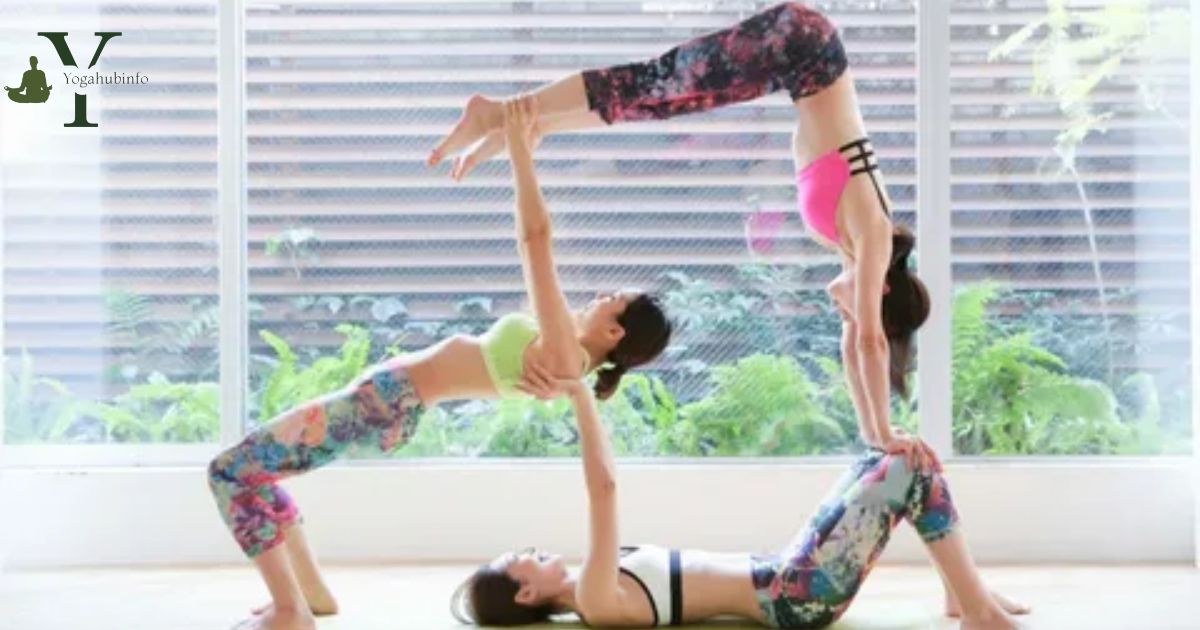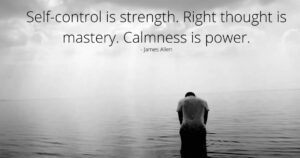Answer .Three friends balance in fun yoga poses, creating a joyful and challenging experience together.
Three-person yoga challenge poses involve a trio working together to create unique and balanced yoga formations. These poses require strong communication, trust, and coordination among participants. The challenge encourages teamwork and builds a sense of unity, fostering a fun and rewarding experience for those involved. Overall, three-person yoga poses add an extra layer of excitement to traditional yoga practice.
Get ready for an adventure with 3-Person Yoga Challenge Poses. Explore balance and teamwork as you attempt unique poses together. Whether you’re a yoga enthusiast or a beginner, this challenge promises fun and laughter. Grab your friends, strike a pose, and embark on a journey of shared strength and flexibility.
Three-person yoga challenge poses involve a trio working together to create unique and balanced formations. These poses require communication, trust, and teamwork among participants. Each person plays a crucial role in maintaining stability and harmony, making it a fun and rewarding group activity. Engaging in three-person yoga poses not only promotes physical strength and flexibility but also fosters a sense of connection and camaraderie.
Discover the Joy of 3-Person Yoga Challenge Poses!
| Pose Name | Description |
| Triangle Trio | Three participants form a triangle shape with their bodies, interlocking arms and legs to create a stable and balanced pose. |
| Group Lotus | Participants sit in Lotus position facing each other, intertwining arms and leaning back to find balance and unity. |
| Triple Downward Dog | Trio stacks on top of each other in a downward dog position, creating a vertical pyramid with each person supporting the next. |
If you’re seeking a delightful and distinctive twist to your yoga routine, why not explore the world of three-person yoga poses?
These poses offer a fantastic opportunity to engage your entire family in the joy of yoga. Suitable for individuals of all ages and fitness backgrounds, it’s a perfect choice, even if you’re a beginner.
We’ll guide you through the safe and effective practice of three-person yoga poses. So, why hesitate? Let the adventure begin.
Easy 3-Person Yoga Pose You Can Try with Friends
Yoga is a great way to connect with friends, and trying a 3-person yoga pose can make it even more enjoyable. Begin by sitting in a circle with your friends, creating a sense of unity. Choose a simple pose, like the Seated Triangle, where each person extends their legs to touch the legs of the person beside them. This pose promotes balance and teamwork while fostering a sense of togetherness.
Another fun and easy 3-person yoga pose is the Group Tree Pose. Stand side by side with your friends, linking arms for support. Lift one leg and place the sole of your foot on the inner thigh of the person next to you. Find your balance together and feel the positive energy flowing through your group. This pose not only enhances stability but also encourages trust and cooperation.
Concluding your yoga session with the Group Child’s Pose is a perfect way to relax and bond with friends. Kneel in a circle and sit back on your heels, then reach forward to place your hands on your friend’s shoulders. This comforting pose promotes a sense of camaraderie and unity, allowing everyone to unwind together. Trying these easy 3-person yoga poses will not only strengthen your bodies but also deepen the connection between you and your friends.
10. King Pigeon Yoga Pose
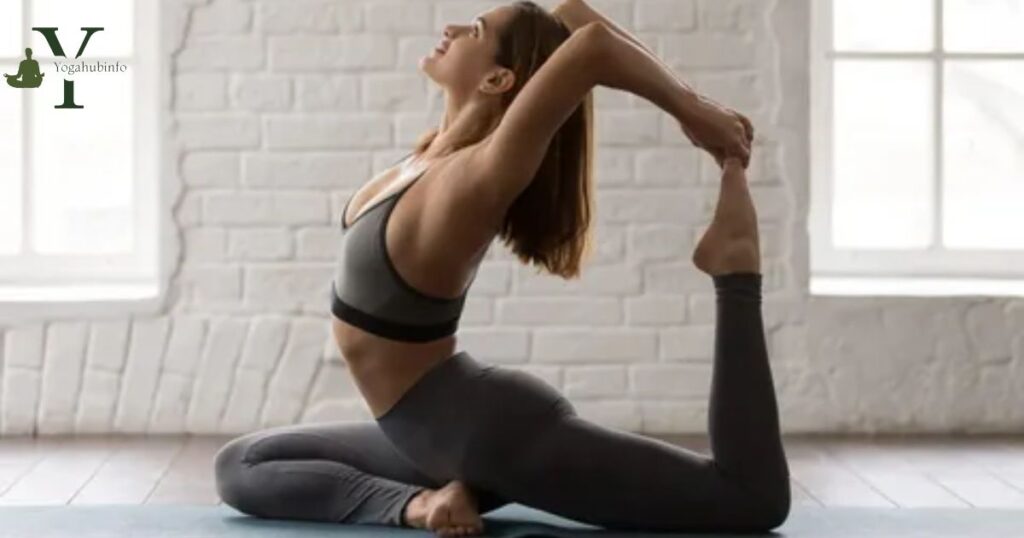
The King Pigeon Yoga Pose, also known as Rajakapotasana, is a deep backbend that combines strength, flexibility, and balance. This advanced yoga pose is named after the majestic and graceful appearance of a pigeon, particularly the male pigeon, which is often referred to as a “king pigeon.” Practicing King Pigeon Pose requires both physical and mental focus, making it a challenging yet rewarding asana.
Here’s a breakdown of the steps to achieve the King Pigeon Yoga Pose:
Start in Downward-Facing Dog
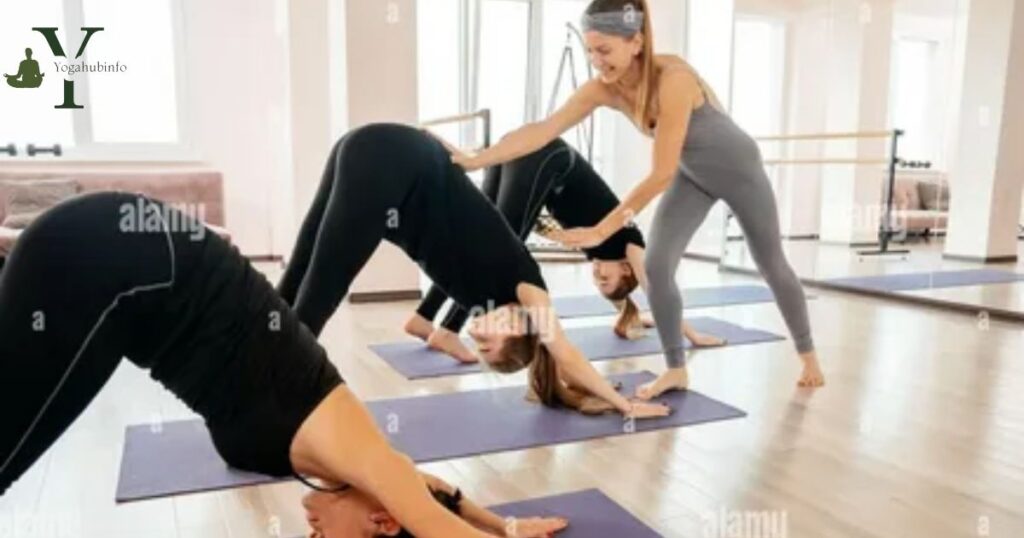
- Begin in a tabletop position, lift your hips up, and push back into Downward-Facing Dog. This helps to warm up and stretch your entire body.
Transition to Pigeon Pose
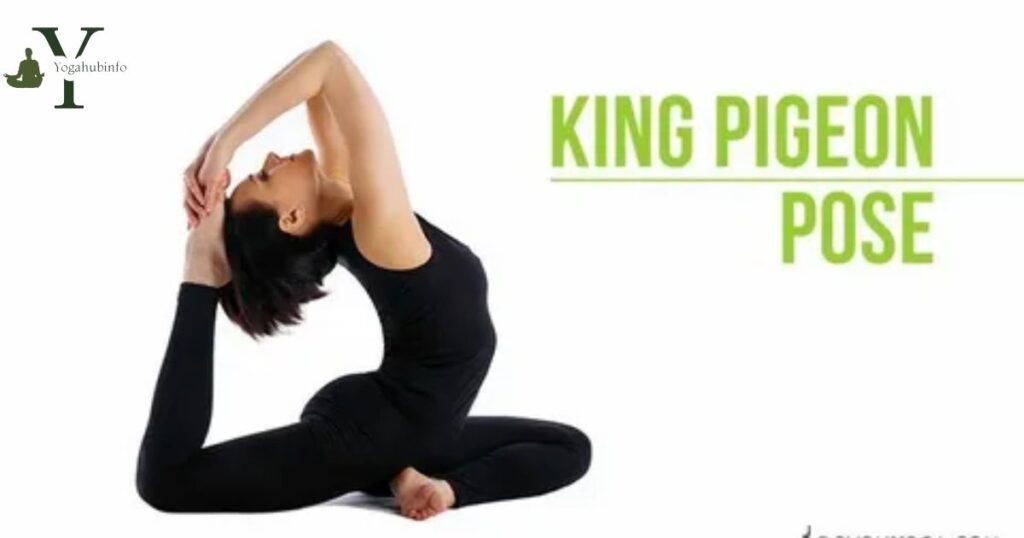
- Bring your right knee forward toward your right wrist, placing it behind your right hand. Extend your left leg straight behind you. The shin of your right leg should be parallel to the front edge of your mat.
Square Your Hips
- Ensure that your hips are squared to the front of the mat. This may involve adjusting the angle of your back leg and the position of your right foot.
Prepare for the Backbend
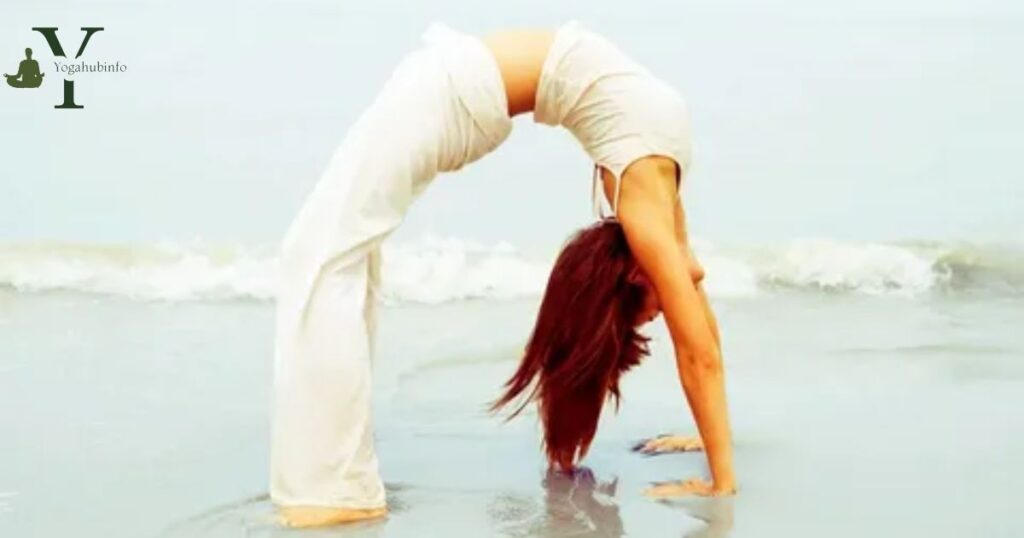
- From Pigeon Pose, bend your left knee and reach back with your left hand to grab hold of your left foot or ankle. Bring your foot towards your buttocks, creating a deep stretch in the quadriceps and preparing for the backbend.
Reach for the Back Foot with the Opposite Hand

- Reach your right hand back and grab hold of your left foot or ankle. Make sure you can comfortably hold the foot before proceeding further.
Lift Your Chest
- Inhale as you lift your chest and arch your back, opening the heart. This action intensifies the backbend and deepens the stretch in the hip flexors.
Engage Your Core
- To maintain stability and protect your lower back, engage your core muscles. Keep your shoulders relaxed and away from your ears.
Gaze Upward
- If comfortable, tilt your head back and gaze upwards, deepening the backbend and enhancing the sense of expansiveness in the chest.
Hold the Pose
- Stay in the King Pigeon Pose for a few breaths, gradually increasing the duration as your flexibility improves. Be mindful of your body and avoid pushing yourself into discomfort.
Release the Pose
- To release the pose, gently release your back foot, come back to Downward-Facing Dog, and repeat the sequence on the other side.
Xtreme Acro Yoga Poses for 3-Person to Challenge
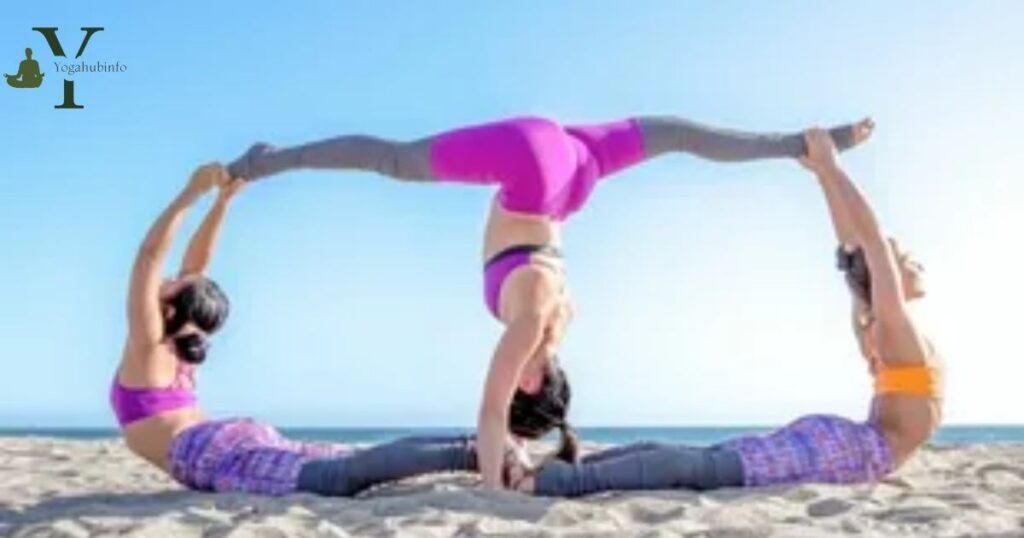
Xtreme Acro Yoga poses for three persons offer an exhilarating and challenging way to take your acrobatic yoga practice to the next level. Acro Yoga, a combination of acrobatics, yoga, and therapeutic Thai massage, typically involves two individuals working together to create a balance of strength, flexibility, and trust. However, incorporating a third person into the mix adds a new dimension of complexity and excitement.
Triple Throne
- In this advanced pose, one person assumes the base position, supporting the weight of two flyers who are balanced on each of the base’s feet. The flyers work together to create a stable and symmetric throne position. This pose requires a high level of communication and coordination among all three participants.
Triple Flying Whale
- The Triple Flying Whale involves three participants creating a dynamic and visually stunning formation. One person takes the base position, supporting two flyers who extend their bodies horizontally. The challenge lies in maintaining balance and alignment while the flyers experiment with various shapes and movements.
Trios Handstand Pyramid
- This pose builds on the traditional handstand by incorporating a third person into the mix. One person acts as the base, supporting the weight of two flyers who stack themselves on top of each other in a pyramid formation. Achieving and maintaining a stable handstand in this three-person configuration requires strength, focus, and precise alignment.
Trio Shoulder Stand
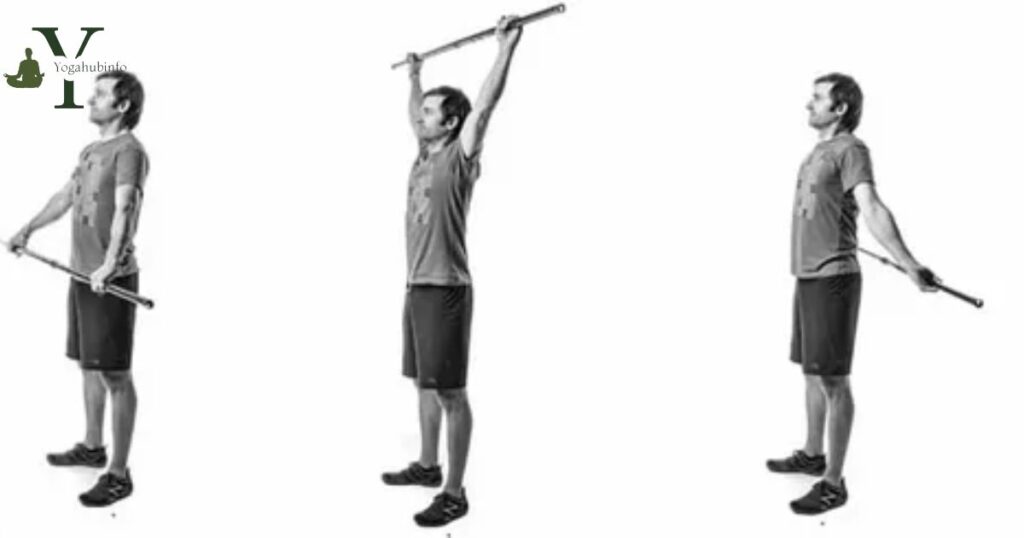
- In this challenging variation of the shoulder stand, one person forms the base, supporting the weight of two flyers who stack themselves on top of each other. The flyers work together to find balance and create aesthetically pleasing shapes. This pose demands strong core engagement, communication, and trust among all participants.
Trios Reverse Bird
- The Reverse Bird pose involves one person as the base, supporting two flyers who create a bird-like shape facing in the opposite direction. Achieving symmetry and balance in this pose requires precise positioning and coordination among all three participants. The flyers must communicate effectively to maintain stability and explore variations in the pose.
When attempting Xtreme Acro Yoga poses for three persons, it is crucial to prioritize safety and communication. Participants should have a solid foundation in acro yoga basics, including proper spotting techniques. Practicing with experienced partners and under the guidance of a qualified instructor can help ensure a safe and enjoyable experience while exploring these challenging and thrilling three-person poses.
3-Person Yoga Poses for Families with Kid
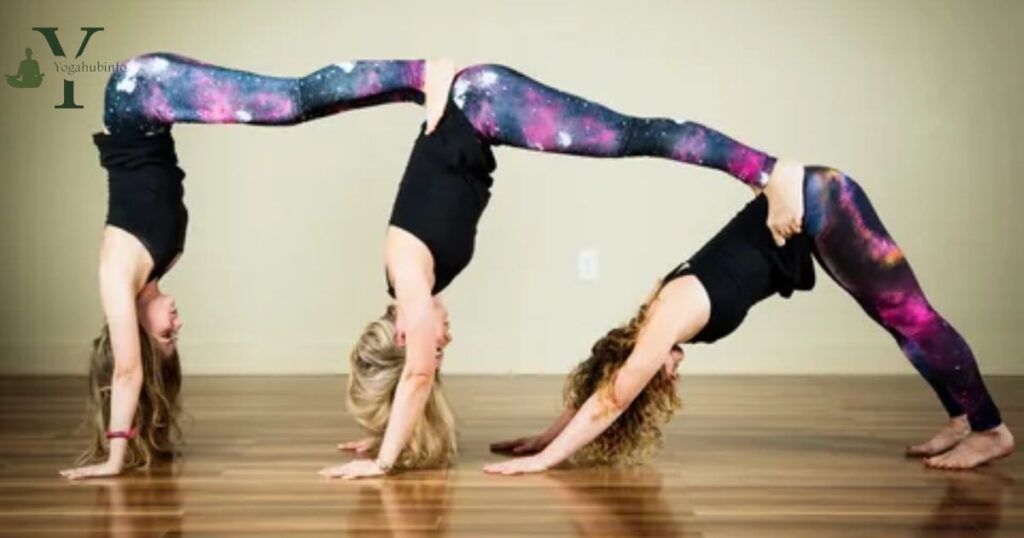
In the fast-paced world we live in, finding quality time to bond as a family can be challenging. Engaging in activities that promote both physical and mental well-being is a wonderful way to strengthen family ties. One such activity is practicing yoga together. In this article, we’ll explore 3-person yoga poses specifically designed for families with kids, fostering a sense of connection, balance, and fun.
Tree of Unity
- The Tree of Unity pose is an excellent way to instill a sense of balance and cooperation within the family. Begin by having one adult and the child stand side by side, each raising one leg and placing the sole of their foot against the inner thigh of the other. The second adult then joins by standing behind and supporting both individuals, creating a harmonious tree-like structure. Encourage each participant to focus on their breath, promoting mindfulness and balance.
Triangle Trio
- The Triangle Trio pose combines elements of the classic triangle pose with a twist, creating a dynamic and engaging experience for the family. Start with one adult assuming the traditional triangle pose, while the child mirrors the posture on the other side. The second adult then completes the trio by forming a triangle shape with their body, connecting with the other two participants. This pose not only enhances flexibility but also encourages communication and teamwork.
Partner Plank Pyramid
- The Partner Plank Pyramid is a challenging yet rewarding three-person yoga pose that builds strength and trust among family members. Begin with one adult and the child forming a plank position facing each other, with their hands on the ground. The second adult then carefully places their feet on the backs of the others, creating a pyramid shape. This pose not only requires core strength but also fosters a sense of support and unity.
Tips for a Successful Family Yoga Session
- Begin with a brief warm-up to prepare the muscles and joints for the yoga poses.
- Communicate openly with each family member, ensuring everyone is comfortable and feels supported.
- Focus on breath awareness to enhance the meditative aspect of the practice.
- Keep the atmosphere light and playful, encouraging laughter and positive interactions.
More 3-Person Yoga Challenge Poses Gallery
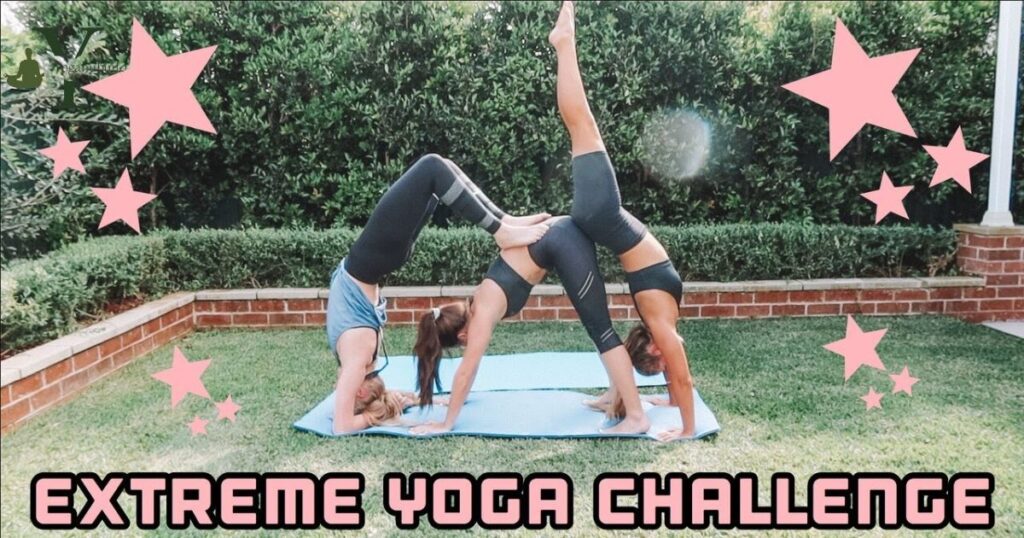
Yoga is not just a solitary practice; it can be a dynamic and engaging group activity too. One of the most exhilarating ways to experience the benefits of yoga with friends is by taking on the challenge of 3-person yoga poses. The harmony, balance, and teamwork required for these poses not only enhance physical flexibility but also strengthen the bonds between participants. In this article, we present a captivating gallery of 3-person yoga challenge poses, inspiring you and your yoga buddies to explore new heights of connection and well-being.
Triangular Unity Pose
- Begin by forming a triangle with your fellow yogis. Each participant takes a position at one corner of the triangle, interlocking arms and supporting one another. This pose not only encourages communication but also demands a shared sense of balance.
Eagle’s Nest Trio
- Adapt the classic Eagle Pose into a group challenge by intertwining your limbs with your partners. Balancing on one leg, create a stable and interconnected trio, mirroring the grace and strength of these majestic birds.
Circling Tree Triad
- Combine the strength of the Tree Pose with the circular motion of a dance. Each participant stands on one leg, interlocking arms and creating a mesmerizing human tree formation. This pose emphasizes coordination, concentration, and a shared commitment to maintaining balance.
Inverted Pyramid Pose
- Turn traditional pyramid poses upside down by creating a human pyramid with three participants. This challenging pose not only requires strength and trust but also fosters a deep sense of connection as each person supports the weight of the others.
Wheel of Serenity
- Elevate your yoga experience with the Wheel Pose in a group setting. Three participants form a circle, interlocking hands and feet, creating a wheel shape. This pose promotes flexibility, core strength, and a sense of unity as participants synchronize their movements.
Floating Lotus Trio
- A beautiful rendition of the Lotus Pose involves three individuals forming a circle, each assuming the Lotus position. This serene pose encourages a shared meditative experience while fostering a deep sense of tranquility among participants.
Popular Yoga Poses for Couple People
Top Yoga Poses for Partners
Explore these five yoga poses that couples often enjoy trying together.
- The Pyramid Pose
Ideal for beginners, this pose is excellent for enhancing balance and flexibility.
One partner assumes a low lunge position with hands on the ground.
The other partner adopts a high plank position with feet resting on the hips of the first person.
Both partners then gradually lower themselves into a low lunge position.
Maintain this pose for 30 seconds before swapping positions.
Partner Twist Pose
Ideal for enhancing flexibility and fortifying core muscles, this pose involves one person seated with legs extended in front. The other person sits behind, wrapping their legs around the waist of the first person. Together, they twist their torsos to the right and then to the left, maintaining the pose for 30 seconds before swapping positions.
Camel Pose
Tailored for those seeking increased flexibility and a thorough stretch for the back muscles, this pose requires one person to adopt an all-fours position with the back arched towards the sky. The partner mirrors the position and raises one arm, forming a heart shape with their partner. Both individuals gradually lower themselves to the ground while keeping their backs arched upward.
Flying Camel Pose
Begin by kneeling on the ground with both partners holding onto one of your ankles. Lean back, utilizing their support to guide you, until a profound stretch is felt in the chest and shoulders. For an added challenge, attempt straightening your arms and legs to achieve a parallel position to the ground. Hold for five breaths before switching positions.
- Partner Forward Fold
- Stand facing each other, a comfortable distance apart.
- Hold hands and walk backward, keeping the spine straight, until you both feel a gentle stretch.
- This pose helps in stretching the hamstrings and lower back, promoting a sense of unity.
- Double Downward Dog
- Begin in a downward dog position.
- One person stays in the traditional pose, while the other partner places their hands on the first person’s hips, creating a V-shape.
- This pose allows for a deep stretch in the shoulders and hamstrings, as well as a shared sense of balance.
- Partner Tree Pose
- Stand side by side, facing the same direction.
- Lift one foot and place the sole against the inner thigh or calf of the standing partner.
- Join hands in front of your hearts, finding balance together.
- This pose enhances concentration, balance, and mutual support.
- Seated Spinal Twist
- Sit facing each other with legs crossed.
- Reach for your partner’s opposite knee and twist gently, supporting each other’s backs.
- This pose provides a soothing spinal stretch and encourages openness in communication.
- Double Boat Pose
- Sit facing each other, knees bent and feet flat on the floor.
- Hold hands and lift your legs off the ground, finding balance on your sit bones.
- This pose strengthens the core muscles and requires synchronized movement.
- Back-to-Back Seated Pose
- Sit back-to-back with your partner, crossing your legs.
- Inhale, lengthen the spine, and exhale, twisting gently to one side.
- This pose promotes flexibility in the spine and encourages a sense of togetherness.
- Partner Wheel Pose
-
- One partner lies on their back with bent knees, feet hip-width apart.
- The other partner stands facing the supine partner, placing their hands on the partner’s ankles.
- The standing partner gently lifts the supine partner’s hips, creating a wheel shape.
- This advanced pose requires trust and communication, while also providing a deep backbend stretch.
Frequently Asked Questions
What is a 3-person yoga challenge pose?
- A 3-person yoga challenge pose involves three individuals working together to create a synchronized and balanced yoga posture, fostering teamwork and flexibility.
How do I choose suitable poses for a 3-person yoga challenge?
- Select poses that accommodate the combined strengths and flexibility of all participants, ensuring a harmonious balance and coordinated execution.
Is 3-person yoga suitable for beginners?
- While some poses may be challenging, beginners can start with simpler poses and gradually progress, focusing on communication and trust-building within the group.
What safety precautions should be considered during a 3-person yoga challenge?
- Prioritize communication, trust, and awareness to avoid injuries, and ensure all participants are comfortable with the chosen poses before attempting them.
Can 3-person yoga poses be modified for different skill levels?
- Yes, modifications can be made to poses to accommodate varying skill levels, allowing participants of different abilities to enjoy the challenge together.
Final Thoughts
In attempting the 3-Person Yoga Challenge Poses, participants develop a profound sense of connection through balance. The poses require synchronized movements, demanding a shared focus and mutual support. This fosters trust and cooperation among the participants, as they rely on each other’s strength and stability to achieve harmony in the poses.
Apart from the evident physical benefits, such as improved flexibility and strength, engaging in these poses enhances mental well-being. The collaborative effort to achieve the poses encourages a positive mindset, reducing stress and promoting relaxation. The shared accomplishment of mastering challenging poses contributes to a sense of achievement and boosts overall self-esteem.
The 3-Person Yoga Challenge Poses serve as a unique platform for strengthening relationships. The shared laughter, support, and encouragement during the practice create lasting memories. These experiences go beyond the yoga mat, positively influencing the dynamics between participants and strengthening the bonds of friendship or family. Embracing the challenges together, participants not only enhance their physical abilities but also deepen their connections with one another.
Explore exciting 3-person yoga challenge poses, fostering teamwork and balance. Elevate your practice with dynamic and engaging group poses.

Marcus Evergreen, with 8 years of yoga expertise, is the author behind yogahubinfo.com, sharing insights and wisdom in holistic well-being.
